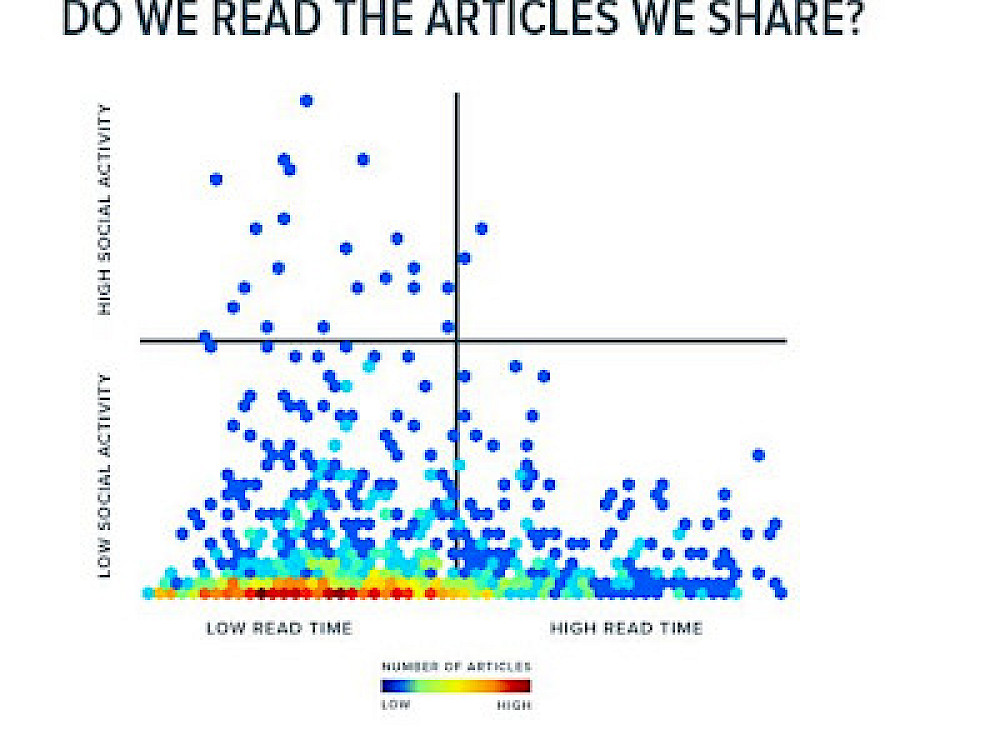A new report by the Reuters Institute finds great variance in the way news outlets use data analytics to inform their editorial strategies. Based on a study of over 30 newsrooms in Europe and North America, the authors, Federica Cherubini and Rasmus Kleis Nielsen, advocate a tailored approach to editorial analytics that goes beyond short-term optimization of page-views.
Most newsrooms have adopted the use of analytics in recent years and journalists who in the past may have resisted the introduction of metrics increasingly request information about how people use their content. Data-informed decision-making previously associated with sites like BuzzFeed, gawker, and the Huffington Post is increasingly central to editorial processes at organisations like the Guardian, the New York Times, and Die Welt as well as leading public service media like the BBc and various start-ups like Quartz and Ze.tt.
There are significant differences in how analytics are used in different news organisations. Many have incrementally adopted a range of rudimentary and off-the-shelf forms of analytics that are often used in an ad-hoc manner to help increase day-to-day traffic and reach, but have done little to develop analytics clearly aligned with editorial priorities and organisational goals, to reorganise workflows, or to ensure relevant and comprehensible data are available and used throughout the newsroom.
Broadly speaking, leading media organisations in the US and the UK still seem ahead in the development and use of editorial analytics, but market leaders in continental European countries like germany and Poland are developing their own practices and pulling ahead of domestic competitors. the whole publishing industry is still behind leading technology companies in terms of their use of analytics, and could also learn from leading advertising, marketing, and e-commerce companies.
When it comes to specifically editorial analytics, digital-only start-ups as well as a small number of relatively innovative private legacy news media are generally leading the development, with smaller private legacy media and many public service media lagging behind. the sophisticated editorial analytics employed by small start-ups across Europe and North America underline that size and resources are not as decisive a factor as a pro-digital culture, strategic leadership, and a willingness to invest in analytics to help understand and engage the audience in a very competitive marketplace of attention.
To make the move from rudimentary or generic analytics to the kind of editorial analytics practised by market leaders, news media need to
- 1. define their editorial priorities and organisational goals,
- 2. identify the data and metrics most useful for pursuing these effectively, and
- 3. develop tools, organisational structures, and newsroom cultures that make analytics actionable both short-term and long-term.
Editorial analytics are powerful but not perfect. Some things are difficult to measure. Some measures have weaknesses and flaws. Some measures are incompatible or contradictory. the data do not speak for themselves. And tools and techniques as well as sources of data have constantly to evolve to keep track with a changing environment. Best-practice editorial analytics are today still primarily concerned with short-term optimisation of onsite traffic and offsite distribution via search engines and social media. Analytics are only beginning to be used for longer term planning including the development of new products, audiences, and newsroom workflows.
Because different news media have different editorial priorities and organisational goals, there is no one right way to do editorial analytics. this also means that analytics are not plug-and-play. Developing effective editorial analytics requires investments in technological tools, organisational reform, and cultural change. this does not need to be expensive (in particular in comparison to the resources already invested in content production, and the risks associated with flying blind), and the returns on investment are in many cases significant. But it does involve change, and change can be difficult.
Access the full report (pdf) which includes case studies and analysis of specific measurement tools.




